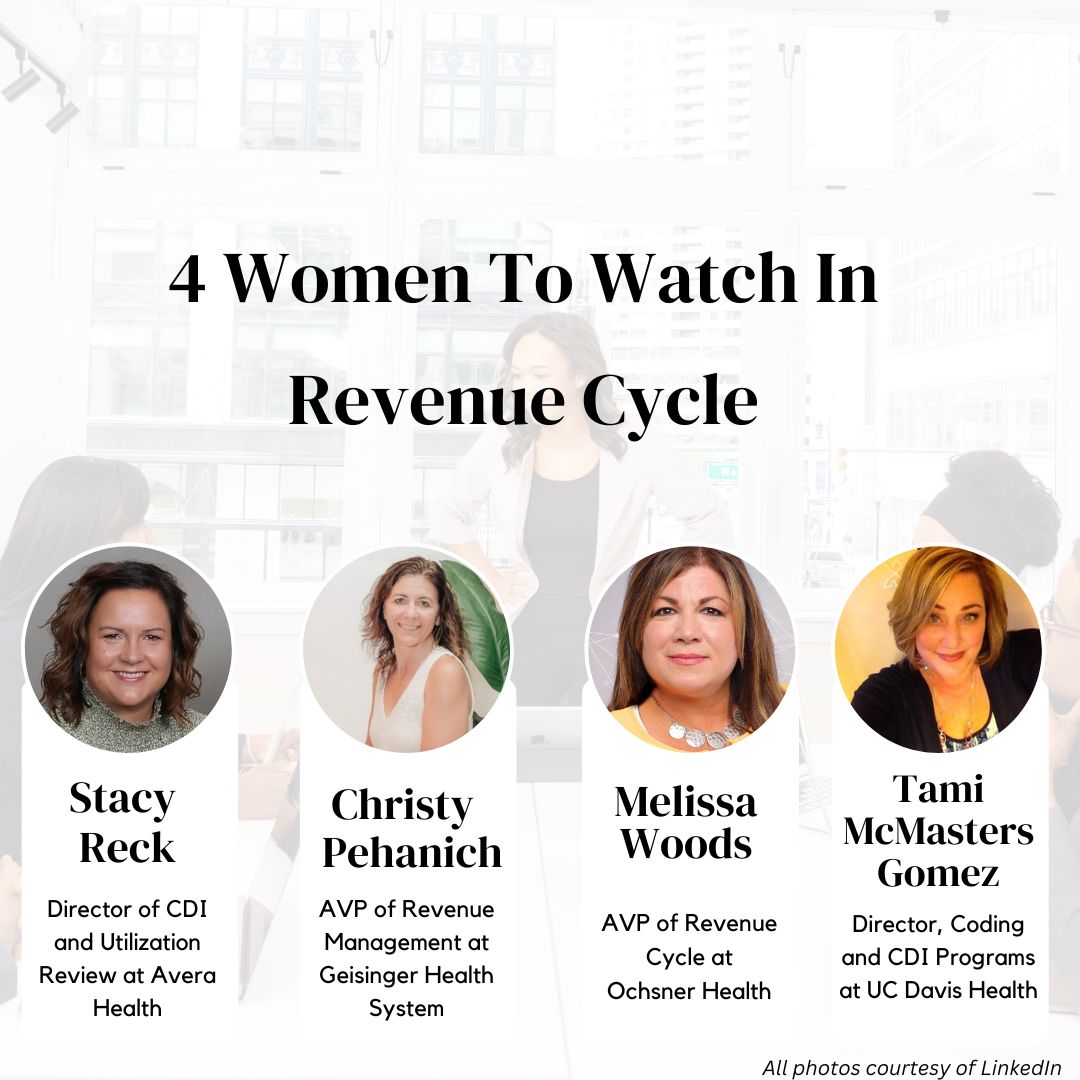Preventing denials, implementing automation, and bridging departmental gaps are just some of the tasks these revenue cycle executives are leading out at their organizations.
Gender equality in the healthcare C-suite hasn't yet been attained—a recent study showed only 33% of senior leaders in healthcare are women—but there are many women executives that are bringing strong strategic leadership to their revenue cycles every day.
In an attempt to underscore those underrepresented, HealthLeaders has chosen four revenue cycle leaders worth highlighting for their achievements in preventing denials, implementing automation, and bridging departmental gaps in the revenue cycle.
Stacy Reck, director of CDI/utilization review at Avera Health
In most revenue cycles, the clinical documentation integrity (CDI) staff is responsible for reviewing documentation to ensure that it supports reported diagnoses and for collaborating with staff to update documentation that is insufficiently supporting medical necessity.
Because your CDI teams have such a heavy hand in documentation review, they make it the perfect place to start when shoring up clinical validation denials.
Reck has streamlined multiple strategies for preventing clinical validation denials before they happen. Reck has also led her team at Avera Health on initiatives that helped to lower MS-DRG downgrades and financial takebacks.
Christy Pehanich, AVP of revenue cycle management at Geisinger Health System
Most revenue cycle leaders have started implementing automation in one sector or another of their department, but while automation may seem like a simple fix, collaboration is usually needed with teams beyond the revenue cycle.
More leaders are bringing in their IT teams to help streamline their revenue cycle automation, and just as Pehanich has done at Geisinger, successfully collaborating with IT and merging skill sets is a necessity in optimizing revenue cycle automation.

Melissa Woods, assistant vice president of revenue cycle financial clearance at Ochsner Health
It's clear that operationalizing processes to generate reliable, accurate good faith estimates (GFE) is necessary and has pushed many organizations to enhance their technology to ease this burden for their front-end revenue cycle.
Woods has done just that at Ochsner by looking internally at their preexisting software while filling in any gaps with a third-party vendor. She played a large role in, what she calls, the organization's “hybrid approach” to its GFE technology implementation.
Tami McMasters Gomez, director of coding and CDI services at UC Davis Health
It was a priority for McMasters Gomez to implement the best technology for her CDI and physician teams to improve their workflows and ensure maximum reimbursement for the organization's middle revenue cycle.
Since implementing new technologies for CDI and physician teams, with the help of McMasters Gomez, UC Davis has seen an overall improvement of physician workflows, improved documentation accuracy, and an almost 5% increase in comorbidity capture rates.
Amanda Norris is the Director of Content for HealthLeaders.
KEY TAKEAWAYS
Only 33% of senior leaders in healthcare are women—but there are many women executives that are bringing strong strategic leadership to their revenue cycles every day.
HealthLeaders has chosen four revenue cycle leaders worth highlighting for their achievements in preventing denials, implementing automation, and bridging departmental gaps in the revenue cycle.
